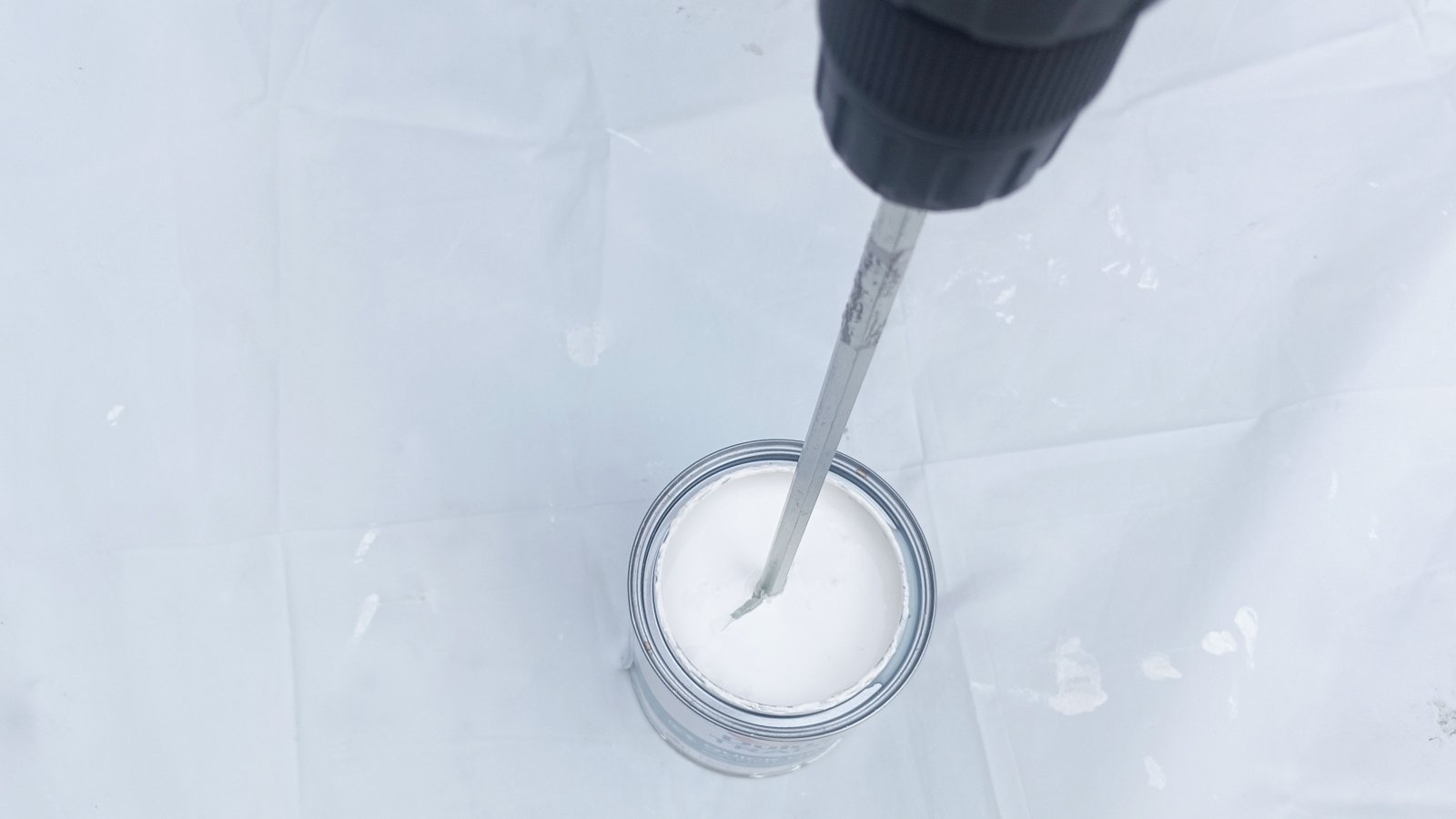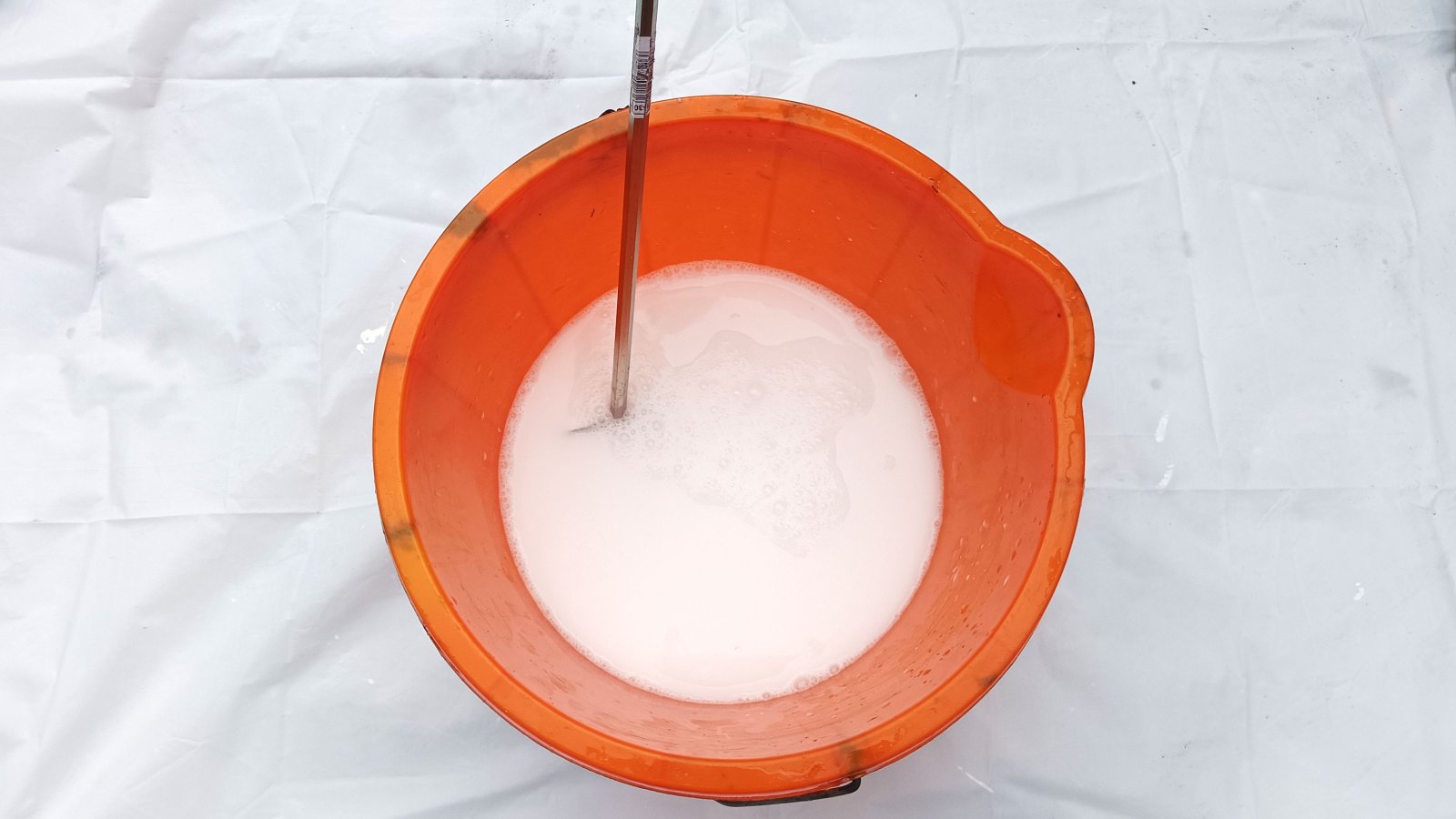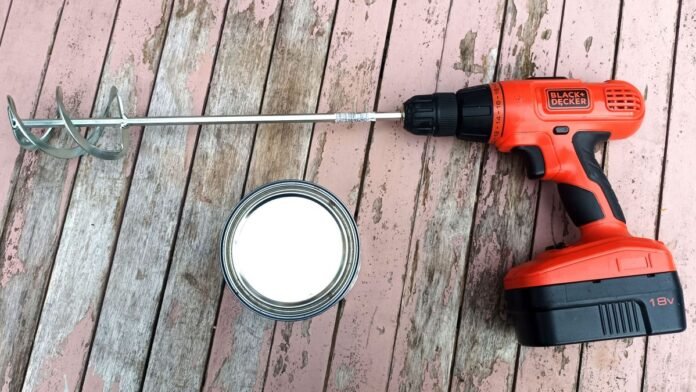Not sure what a drill paddle mixer is? It’s a smaller version of a paddle mixer that is powered by a hand drill. The fact that it fits into a drill that you already own is just one of its real plus points.
It’s the perfect companion for a host of DIY projects, will work with the best cordless drills or corded drills and it costs a lot less than buying a specialist paddle mixer.
Here we reveal what DIY jobs they can tackle and what to avoid, what size to choose, how to use them and how to keep them clean.
Why drill paddle mixers are a must for any DIYer
Never used a paddle mixer before? Here we reveal what DIY jobs it will be useful for and what you can do with one built for your drill
1. They’re perfect for mixing paint
Paint needs a mix every time you open a tin. When storing paint the ingredients will separate and heavier ingredients will settle at the bottom of the tin. So if the paint is not stirred and the ingredients mixed back together you will get an uneven coat of paint, which will look patchy when dry and won’t adhere as well to the surface.
To mix paint you need to open a paint can (properly), place the paddle mixer in the paint can – touching the bottom of the tin – and slowly start the paddle, moving around the tin until the paint is mixed. Wait for the paddle to stop and remove. Don’t use the paddle at a high speed as the paint can flick everywhere and make a right old mess.

2. Ensure your grout is mixed evenly
A drill paddle mixer is great for mixing grout as grout is typically mixed up in batches. Check out our quick guide on how to mix grout properly to get the perfect grout.
Make sure you follow the recommended ratios guide. It’s especially important that you mix coloured grout well, so you don’t end up with patchy different shades of grout.
3.Quick and easy for mixing plaster
If you have a small plastering job that needs doing, a paddle mixer is much more efficient and productive than mixing by hand. Plaster needs to be lump free and the right consistency and a paddle mixer is the ideal tool to make that happen quickly.
Make sure your bucket is clean and add cold water as recommended by the manufacturer. Now add half the plaster and mix and continue adding until you get the right consistency.
4. Better than mixing cement by hand
If you need to mix a small amount of concrete a drill paddle mixer is an ideal choice. If you want to mix big batches of concrete you will need a cement mixer. Hire one locally or invest in one like this Handy Electric H-frame cement mixer from Amazon if doing regular jobs.
Work out the ratio of sand and cement you are going to use. It’s slightly different for different jobs, for example, if you are removing a brick from a wall and replacing, use one part cement and four parts sand mixed to a stiff consistency.
Add cement and sand to a bucket and mix while dry. Make a hole in the middle of the mix, add water and use your paddle mixer to mix. Add more water if needed to get the right consistency.
5. Get lump free wallpaper paste
Wallpaper paste is typically mixed in quantities that work perfectly with a drill paddle mixer. There’s nothing worse than lumps in wallpaper paste, it needs to be smooth to get a flat finish and no-one wants bubbles in wallpaper, it looks rubbish.
To mix, read the packet instructions, and add the required amount of water into a clean bucket or container. Put your paddle mixer in the water, start up your drill (slowly) and gradually add the paste until you get the right consistency.
6. Fine for large batches of filler
If you need a lot of filler for a job it needs to be smooth and consistent and a paddle mixer is the ideal tool. But it isn’t an ideal choice for small quantities of filler that you typically need to repair cracks in plaster. If you only need a small quantity, mix by hand.
Drill paddle mixer FAQs
Can you use a paddle mixer with a cordless drill?
Yes you can, but it will depend on the power of the drill on how well it will work. Occasional use of a cordless drill for mixing small quantities of paint or materials is generally OK.
But, if you want to mix products on a regular basis you are better off with a corded drill with a more powerful motor. A 450-600 watt motor is the typical output for an everyday DIY drill, but you can get more powerful motors which are better at tackling larger mixing jobs.
What jobs should I avoid with a drill paddle mixer?
A drill paddle mixer is built for tackling small jobs such as mixing paint and grout. While it is also good for mixing cement, filler and plaster, it’s the power of the drill and the size of the drill paddle mixer that limits what jobs you can tackle.
If you only need to mix small amounts of cement or plaster you are good to go. But, if you want to mix large quantities of cement or plaster you will need a more powerful tool such as this DEWALT Dual Handle Paddle Mixer from Amazon
What size do paddle mixers for drills come in?
They do vary in size but the common size is 400mm in length with a 70mm, 80mm or 100mm diameter on the mixing component and typically an 8mm width. The common chuck size for most drills is 10mm or 13mm so a mixing paddle will fit both these common sizes.
I bought this 70mm Toolty Helix Mixing Paddle from Amazon so I could mix smaller one litre tins of paint as a 100mm mixer – or bigger – is too large to fit.
You can also buy flat bottomed paddle mixers that rest on the bottom of a container to help stabilise the mixer. But personally I prefer the mixer style I choose as I think it mixes paint better.
How do you clean a drill paddle mixer?
This does depend on what you have been mixing with the paddle, but as a general rule water is the weapon of choice. This is ideal for paint, grout, filler, cement and plaster.
Fill a bucket with water, place the paddle mixer in the water and switch on the drill. Stop and start to help remove any material until the job is done. When finished, wipe down with a dry cloth and store.
If you have used a paddle mixer to mix an oil based paint water in a bucket will not work. You can fill a bucket with a white spirit like this Tetrion White Spirit from Amazon, but this can be an expensive option.
A cheaper option is to dip a clean cloth in White Spirit and wipe down the paddle. You can finish off by filling a bucket with hot water and a squirt of washing up liquid and rinsing the paddle mixer in the water



